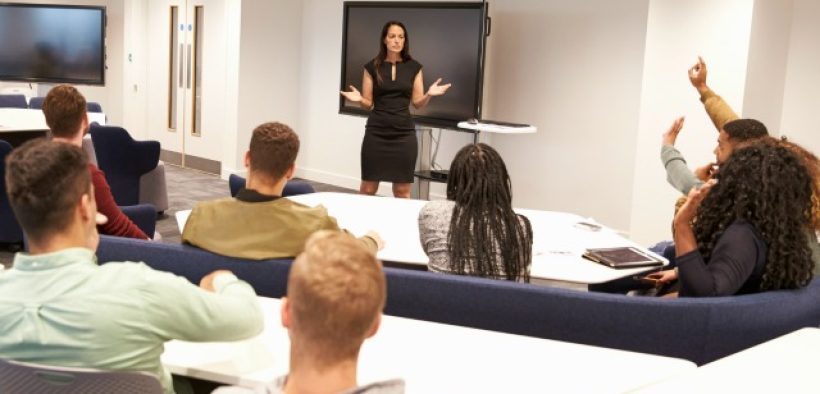Most faculty aspire to engage and involve students in interesting and insightful discussions. But these in-class and online exchanges frequently disappoint faculty. Students come to them unprepared. They engage reluctantly. Their individual and unrelated comments take the discussion in different directions. There can be awkward silences that force faculty to rephrase questions or make statements in an effort to restart the discussion. Unprepared students tend to deal with discussion topics superficially, and they don’t delve deeply into the issues. Teachers soon feel compelled to add content depth and detail, and the more teachers talk, the less students contribute. Unfortunately, in many cases, discussions morph into lectures and students seem just fine with that.
Are faculty aspirations for discussion unjustified? Are they unrealistic, given today’s college students? No. Discussion remains a powerful instructional tool. It affords students the opportunity to learn from and with each other. Students phrase ideas in ways that help other students understand. One student’s question often asks something many students would like to know. Different perspectives are shared, and students come to realize that not everyone understands or experiences things in the same way. Discussions can be stimulating, provocative even. They can cultivate critical-thinking and problem-solving skills. Students learn to craft arguments and to refute them. Discussions can model civil discourse. For all these reasons and more, good discussions promote significant learning experiences.
At the crossroads between what discussion can be, and often is, stands the teacher whose challenge is easy to understand yet complicated to execute: lead and guide the exchange, but without controlling and directing it. What makes discussions engaging is the free flow of ideas, but these ideas stop flowing freely when teacher talk dominates. As teachers, there are several factors that make it easy for us to assume a commanding position in discussions. We have content expertise. We are in charge of the course and who gets to talk. We wield grading power. It’s not surprising that students direct their comments to the teacher during discussion and not to each other.
Facilitation Skills: The Way to Better Student Discussions

Related Articles
I have two loves: teaching and learning. Although I love them for different reasons, I’ve been passionate about...
Active learning is a mostly meaningless educational buzzword. It’s a feel-good, intuitively popular term that indicates concern for...
Perhaps the earliest introduction a student has with a course is the syllabus as it’s generally the first...
Generative AI allows instructors to create interactive, self-directed review activities for their courses. The beauty of these activities...
I’ve often felt that a teacher’s life is suspended, Janus-like, between past experiences and future hopes; it’s only...
I teach first-year writing at a small liberal arts college, and on the first day of class, I...
Proponents of rubrics champion them as a means of ensuring consistency in grading, not only between students within...







